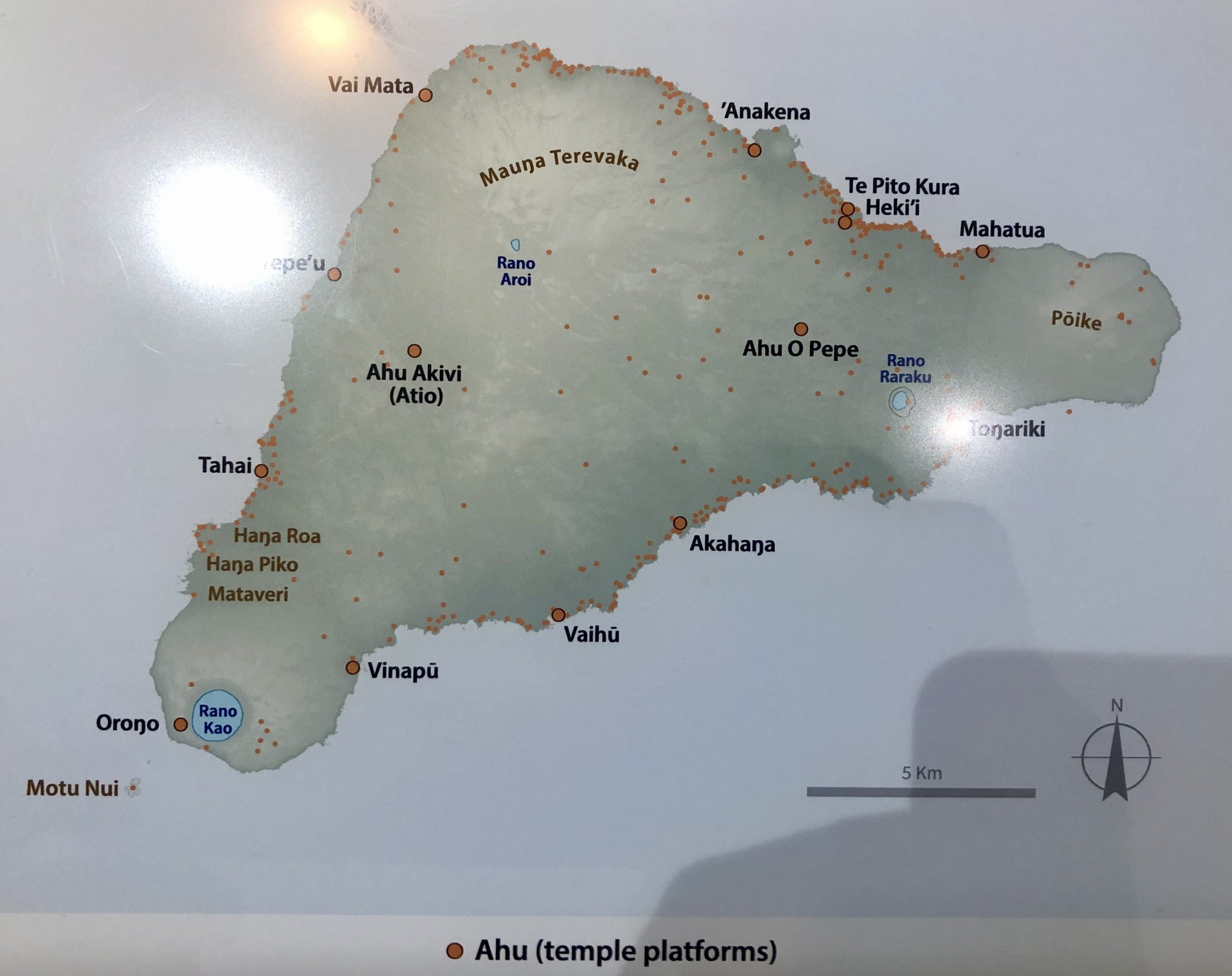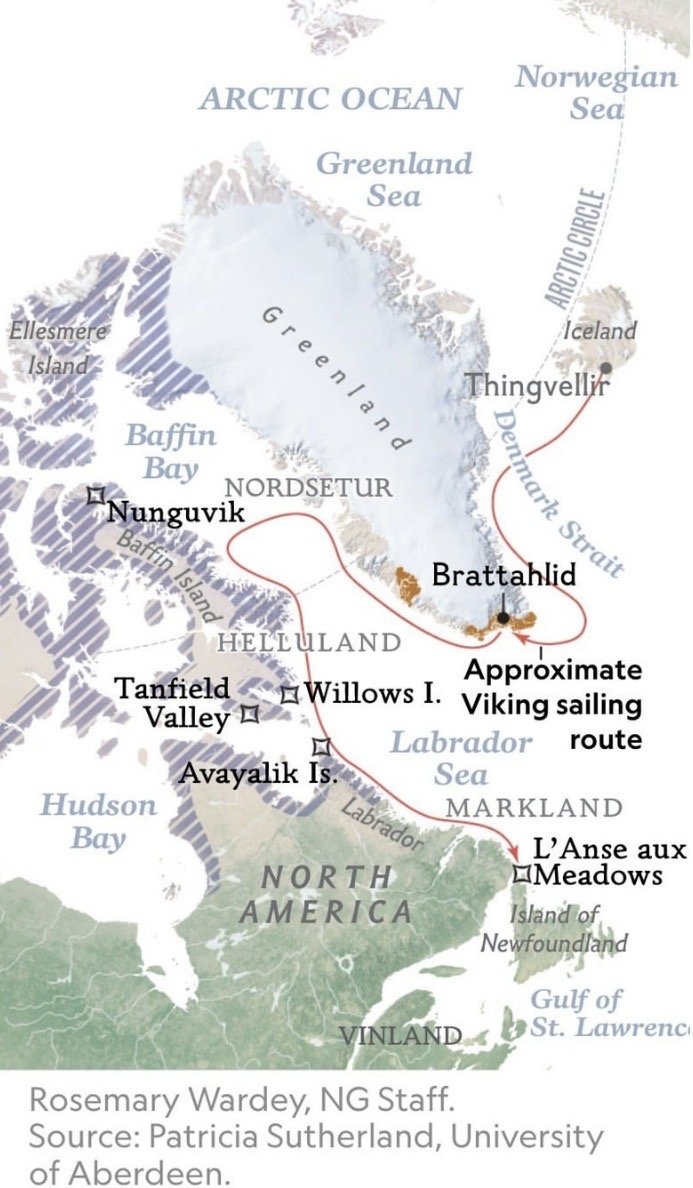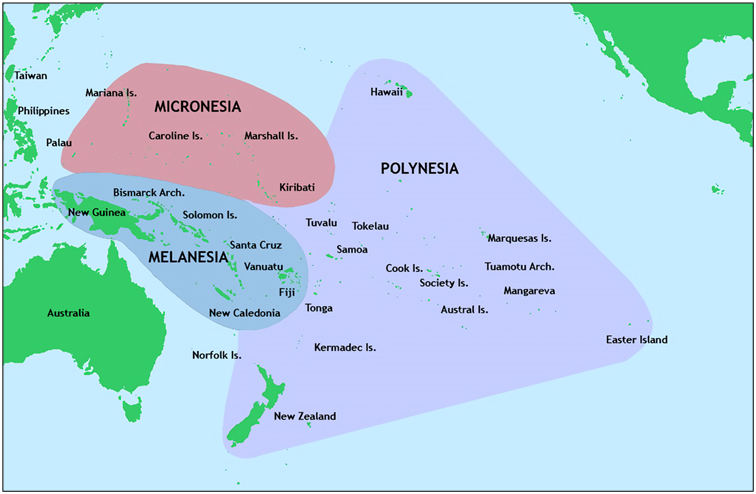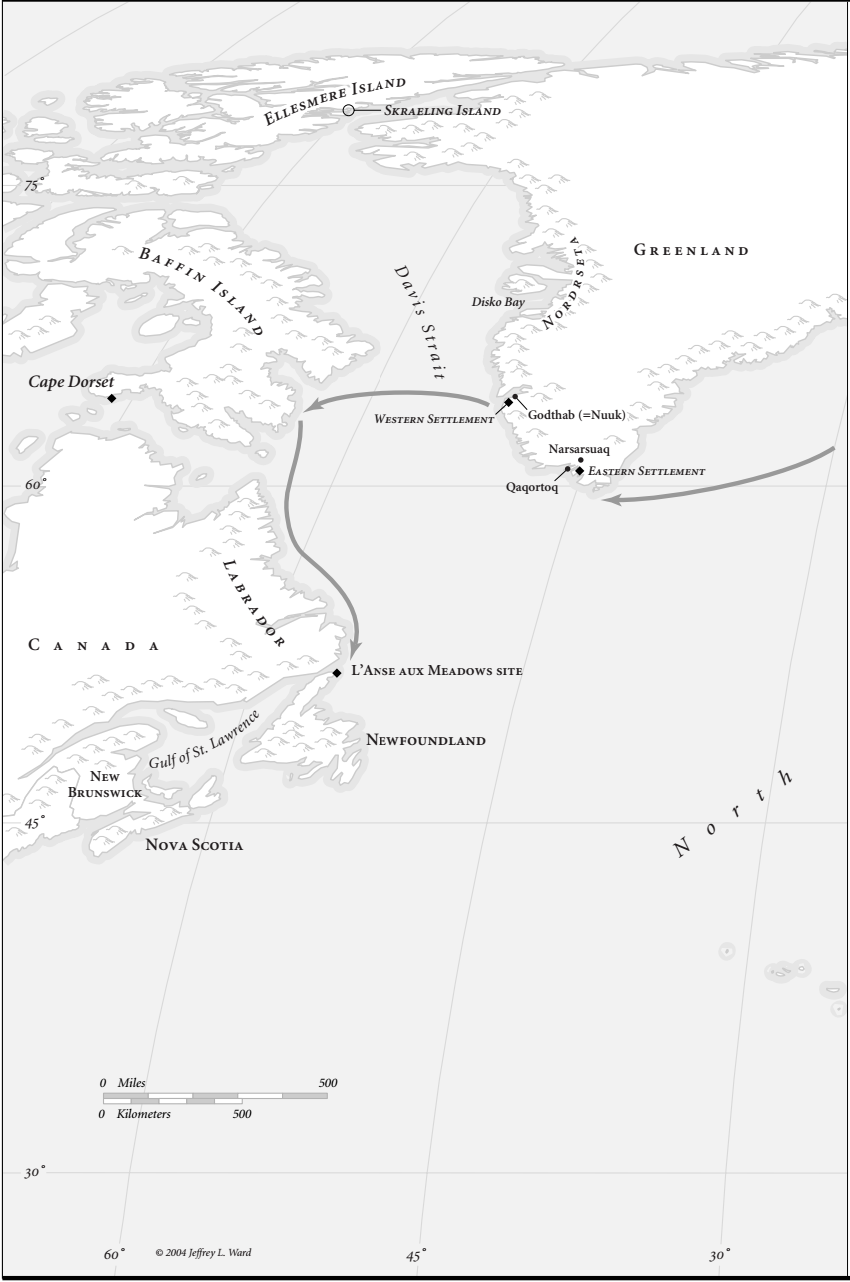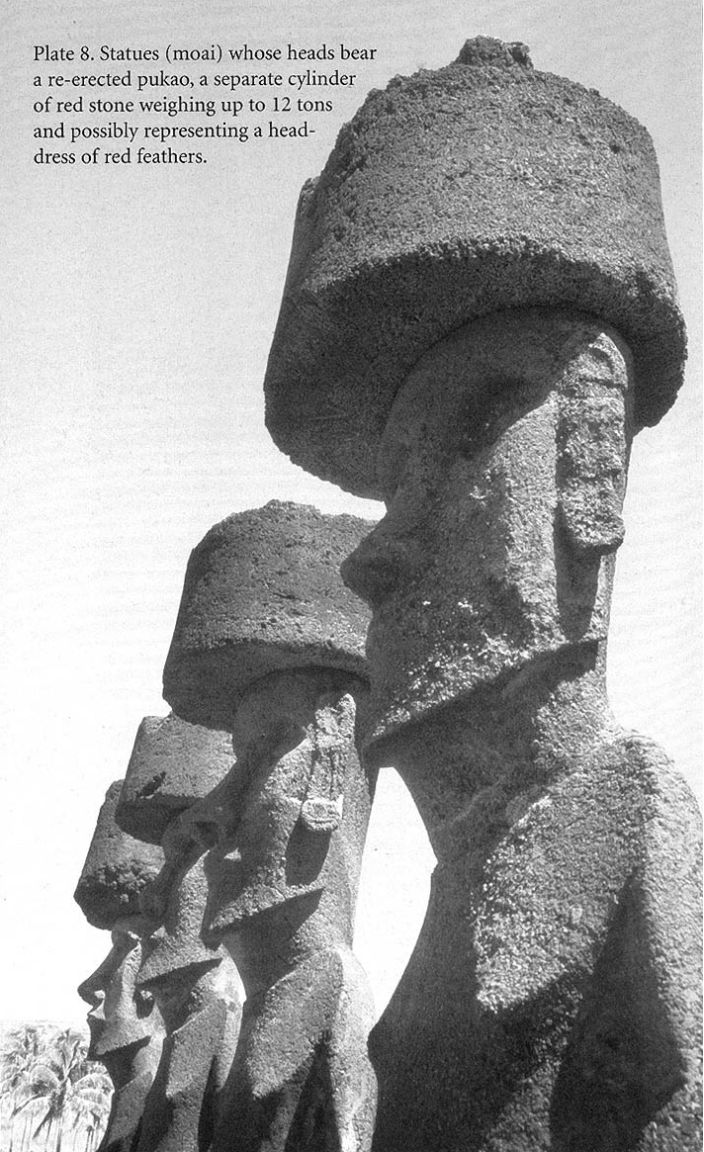Collapse by Diamond
Ref: Jared Diamond (2005). Collapse: How Societies Choose to Fail or Succeed. Penguin Publishing.
_____________________________________________________________________________________
Summary
Collapse can be triggered by “push” (population pressure and lack of opportunities at home), “pull” (good opportunities and empty areas to colonize overseas), or both.
The five factors that provide the framework for this book: self-inflicted environmental damage, climate change, hostilities with other societies, friendly trading relations with other societies, and cultural attitudes.
I have often asked myself, “What did the Easter Islander who cut down the last palm tree say while he was doing it?” Like modern loggers, did he shout “Jobs, not trees!”? Or: “Technology will solve our problems, never fear, we’ll find a substitute for wood”? Or: “We don’t have proof that there aren’t palms somewhere else on Easter, we need more research, your proposed ban on logging is premature and driven by fear-mongering”?
If mere thousands of Easter Islanders with just stone tools and their own muscle power sufficed to destroy their environment and thereby destroyed their society, how can billions of people with metal tools and machine power now fail to do worse?
Autocatalytic expansion of a human population: some initial advantages that a people gains (such as technological advantages) bring them profits or discoveries, which in turn stimulate more people to seek profits and discoveries, which result in even more profits and discoveries stimulating even more people to set out, until that people has filled up all the areas available to them with those advantages, at which point the autocatalytic expansion ceases to catalyze itself and runs out of steam.
_____________________________________________________________________________________
—Viking Colonies—
Overview: The Vinland colony, representing Europeans’ first attempt to settle North America, was quickly abandoned; the Greenland colony, for 450 years the most remote outpost of European society, finally vanished; the Iceland colony struggled for many centuries through poverty and political difficulties, to emerge in recent times as one of the world’s most affluent societies; and the Orkney, Shetland, and Faeroe colonies survived with little difficulty.
Norse Gods
Frey: Fertility
Thor: Sky
Odin: War
The four main environmental variables responsible for the different outcomes appear to be: ocean distances or sailing times by ship from Norway and Britain; resistance offered by non-Viking inhabitants, if there were any; suitability for agriculture, depending especially on latitude and local climate; and environmental fragility, especially susceptibility to soil erosion and deforestation.
The Viking livestock were the same five species that had provided the basis of Fertile Crescent and European food production for thousands of years: cows, sheep, goats, pigs, and horses. Of those species, the ones considered of highest status by Vikings were pigs bred for meat, cows for milk products such as cheese, and horses used for transport and prestige. In Old Norse sagas, pork was the meat on which warriors of the Norse war god Odin feasted daily in Valhalla after their deaths. Much lower in prestige, but still useful economically, were sheep and goats, kept more for milk products and wool or hair than for meat.
Iceland
Environmental Fragility: Cooler Climate, Shorter Growing Season, slow plant growth, marginal agricultural yields, transition to herding vice crops (due to temperature), volcanic ash continually poisoned livestock fodder, and fragile, unfamiliar soils.
Iceland’s soils and dense woodlands were impressive to the eye—corresponding to the large balance of the bank account—that balance had accumulated very slowly (as if with low interest rates) since the end of the last Ice Age. The settlers eventually discovered that they were not living off of Iceland’s ecological annual interest, but that they were drawing down its accumulated capital of soil and vegetation that had taken ten thousand years to build up, and much of which the settlers exhausted in a few decades or even within a year. Inadvertently, the settlers were not using the soil and vegetation sustainably, as resources that can persist indefinitely (like a well-managed fishery or forest) if harvested no faster than the resources can renew themselves.
The original vegetation consisted of nothing taller than low willows, birches, aspen, and junipers, which were quickly cleared by the first settlers and prevented from regenerating by browsing sheep.
Iceland’s combination of fragile soils and slow plant growth creates a positive feedback cycle to erosion: after the protective cover of vegetation is stripped off by sheep or farmers, and soil erosion has then begun, it is difficult for plants to reestablish themselves and to protect the soil again, so the erosion tends to spread.
Vinland
The known Vinland voyages were organized in Greenland by two sons, a daughter, and a daughter-in-law of that same Erik the Red who had founded the Greenland colony in 984. Their motive was to reconnoiter the land, in order to see what products, it offered and to gauge its suitability for settlement.
The Vikings established a base camp on Newfoundland, where they could remain for the winter, so as to be able to spend the entire subsequent summer exploring.
The Vinland colony failed because the Greenland colony itself was too small and poor in timber and iron to support it, too far from both Europe and from Vinland, owned too few oceangoing ships, and could not finance big fleets of exploration; and that one or two shiploads of Greenlanders were no match for hordes of Nova Scotia and Gulf of St. Lawrence Indians when they were provoked.
Faeroes, Shetlands, Orkneys
200 miles N of the Orkneys and 400 miles W of Norway; readily accessible to Viking ships carrying settlers and trade goods, but beyond reach of earlier ships. Hence the Vikings found the Faeroes uninhabited except perhaps for a few Irish hermits.
Greenland
Norse Greenland was a strongly communal society, in which one person could not go off, make a living by himself or herself, and hope to survive. On the one hand, cooperation among people of the same farm or community was essential for the spring seal hunt, summer Nordrseta hunt, late-summer hay harvest, and autumn caribou hunt and for building, each of which activities required many people working together and would have been inefficient or impossible for a single person alone.
Western Settlement was controlled by Sandnes, its richest farm and its sole one with access to the outer 3ords, while Eastern Settlement was controlled by Gardar, its richest farm and the seat of its bishop.
The Greenland Norse damaged their environment in at least three ways: by destroying the natural vegetation, by causing soil erosion, and by cutting turf. Thus, the impact of the Norse on the natural vegetation left them short of lumber, fuel, and iron. Their other two main types of impact, on soil and on turf, left them short of useful land.
Soil Erosion: The sequence of soil erosion in Greenland begins with cutting or burning the cover of trees and shrubs, which are more effective at holding soil than is grass. With the trees and shrubs gone, livestock, especially sheep and goats, graze down the grass, which regenerates only slowly in Greenland’s climate. Once the grass cover is broken and the soil is exposed, soil is carried away especially by the strong winds, and also by pounding from occasionally heavy rains, to the point where the topsoil can be removed for a distance of miles from an entire valley. In areas where sand becomes exposed, as for example in river valleys, sand is picked up by the wind and dumped downwind.
Farming
Pigs proved terribly destructive and unprofitable in lightly wooded Greenland, where they rooted up the fragile vegetation and soil.
Cows required far more effort than sheep or goats to rear in Greenland’s climate, because they could find grass in pastures only during the three snow-free summer months.
A drop in summer temperature by a mere 1° C would suffice to cause failure of the hay crop at the former location.
Estimates suggest that the loss of only one-quarter of the total pasture area at Eastern Settlement or Western Settlement would have sufficed to drop the herd size below that minimum critical threshold. That’s what actually appears to have happened at Western Settlement, and possibly at Eastern Settlement as well.
Deforestation
Measurements in several countries show that it takes on the average about 4 lbs of wood to make 1 lb of charcoal. Because of that requirement, plus the low Fe content of bog Fe, Viking Fe extraction and tool production and even the repair of Fe tools consumed enormous quantities of wood, which became a limiting factor in the history of Viking Greenland, where trees were in short supply.
Agriculture
Growing crops is marginal in Greenland due to its cold climate and short growing season.
Cold-resistant crops: cabbage, beets, rhubarb, and lettuce, which grew in medieval Norway, and potatoes.
Average Year
Late May- Early Jun: Seal Hunting, when the migratory harp and hooded seals moved in herds along the outer Fjords, and the resident common seals came out on beaches to give birth and were easiest to catch.
Jun- Aug: An especially busy season, when the livestock were brought out to pastures to graze, livestock were yielding milk to turn into storable dairy products, some men set out in boats for Labrador to cut timber, other boats headed north to hunt walruses, and cargo boats arrived from Iceland or Europe for trading.
Aug- Early Sep: Hectic weeks of cutting, drying, and storing hay, just before the weeks in September when the cows were led back to barns from pastures and the sheep and goats were brought nearer to shelter.
Sep- Oct: Caribou hunt.
Nov- Apr: A time to tend the animals in barns and shelters, to weave, to build and repair with wood, to process the tusks of walrus killed during the summer—and to pray that the stores of dairy products and dried meat for human food, the hay for animal fodder, and the fuel for heating and cooking didn’t run out before the winter’s end.
_____________________________________________________________________________________
Rapa Nui (Easter Island)
Two main sets of factors behind Easter’s collapse: human environmental impacts, especially deforestation and destruction of bird populations; and the political, social, and religious factors behind the impacts, such as the impossibility of emigration as an escape valve because of Easter’s isolation, a focus on statue construction for reasons already discussed, and competition between clans and chiefs driving the erection of bigger statues requiring more wood, rope, and food.
Polynesian Easter Island was as isolated in the Pacific Ocean as the Earth is today in space.
Easter’s land surface was divided into about a dozen (either 11 or 12) territories, each belonging to one clan or lineage group, and each starting from the seacoast and extending inland-as if Easter were a pie cut into a dozen radial wedges. Each territory had its own chief and its own major ceremonial platforms supporting statues. The clans competed peacefully by seeking to outdo each other in building platforms and statues, but eventually their competition took the form of ferocious fighting.
Moai (Statues) & Ahu (Stone Platforms)
887 Moai have been identified (of which nearly half still remain in Rano Raraku Quarry), representing high-ranking ancestors, rest on giant Ahu; ~300 ahu have been identified, of which many were small and lacked moai, but about 113 did bear moai, and 25 of them were especially large and elaborate. Each of the island’s dozen territories had between one and five of those large ahu. Most of the statue bearing ahu are on the coast, oriented so that the ahu and its statues faced inland over the clan’s territory; the statues do not look out to sea.
The “average” erected statue was 13’ tall and weighed about 10 tons. The tallest ever erected successfully, known as Paro, was 32’ tall but was slender and weighed “only” about 75 tons, and was thus exceeded in weight by the 87-ton slightly shorter but bulkier statue on Ahu Tongarik.
1100-1600: Dating suggests three phases of construction and reconstruction of Ahu Nau Nau at Anakena, the first phase around A.D. 1100 and the last phase ending around 1600. The earliest ahu were probably platforms without any statues, like Polynesian marae elsewhere. According to Oral traditions, the last ahu and moai were erected around 1620, with Paro (the tallest) being among the last.
Deforestation: Deforestation is more severe on: dry islands than wet islands; cold high-latitude islands than warm equatorial islands; old volcanic islands than young volcanic islands; islands without aerial ash fallout than islands with it; islands far from Central Asia’s dust plume than islands near it; islands without makatea than islands with it; low islands than high islands; remote islands than islands with near neighbors; and small islands than big islands.
Rats introduced accidentally as stowaways “used” the palm tree and doubtless other trees for their own purposes: every Easter palm nut that has been recovered shows tooth marks from rats gnawing on it and would have been incapable of germinating.
On discovery, the islanders’ only watercraft were small and leaky canoes, no more than 10 feet long, capable of holding only one or at most two people.
Soil Fertility
Old islands that hadn’t experienced any volcanic activity for over a million years ended up more deforested than young, recently active volcanic islands. That’s because soil derived from fresh lava and ash contains nutrients that are necessary for plant growth, and that gradually become leached out by rain on older islands. One of the two main ways that those nutrients then become renewed on Pacific islands is by fallout of ash carried in the air from volcanic explosions.
_____________________________________________________________________________________
Misc Quotes
The values to which people cling most stubbornly under inappropriate conditions are those values that were previously the source of their greatest triumphs over adversity.
Andesite Line: In the SW Pacific on the Asian side of the andesite line, volcanoes blow out ash that may be wind-carried for hundreds of miles and that maintains the fertility even of islands (like New Caledonia) that have no volcanoes of their own. In the central and E. Pacific beyond the Andesite Line, the main aerial input of nutrients to renew soil fertility is instead in dust carried high in the atmosphere by winds from the steppes of Central Asia. Hence islands east of the Andesite Line, and far from Asia’s dust plume, ended up more deforested than islands within the Andesite Line or nearer to Asia.
Makatea: A coral reef thrust into the air by geological uplift.
The Inuits’ immediate predecessors were a culture referred to by archaeologists as the Dorset people, from their habitations identified at Cape Dorset on Canada’s Baffin Island.
Food Taboos: Every society has its own arbitrary food taboos, as one of the many ways to distinguish itself from other societies: we virtuous clean people don’t eat those disgusting things that those other gross weirdoes seem to savor.
The O in the water that constitutes snow or ice consists of three different isotopes, i.e., three different types of O atoms differing just in atomic weight because of different numbers of uncharged neutrons in the O nucleus. The overwhelmingly prevalent form of natural O (99.8% of the total) is the isotope O-16, but there is also a small proportion (0.2%) of O-18, and an even smaller amount of O-17. All three of those isotopes are stable, not radioactive, but they can still be distinguished by an instrument called a mass spectrometer. The warmer the temperature at which snow forms, the higher is the proportion of O-18 in the snow’s O.
Catalysis: the speeding-up of a chemical reaction by an added ingredient, such as an enzyme.
Autocatalytic: A chemical reaction that produces a product that also acts as a catalyst, so that the speed of the reaction starts from nothing and then runs away as some product is formed, catalyzing and driving the reaction faster and producing more product which drives the reaction still faster; the prime example being the explosion of an atomic bomb when neutrons in a critical mass of uranium split uranium nuclei to release energy plus more neutrons, which split still more nuclei.
_____________________________________________________________________________________
Chronology
29 Apr- 4 May, 1992: The Rodney King Riots in LA following the acquittal of policemen on trial for brutally beating a poor person provoked thousands of outraged people from poor neighborhoods to spread out to loot businesses and rich neighborhoods.-Collapse by Diamond.
1966: Eastern Island Natives are granted Chilean Citizenship.-Collapse by Diamond.
1961: Archaeologists locate the Vikings’ Newfoundland base camp at L’Anse aux Meadows on the NW coast of Newfoundland.-Collapse by Diamond.
1944: Iceland achieves independence from Denmark.-Collapse by Diamond.
1904: Iceland achieves home rule.-Collapse by Diamond.
1888: Chile annexes Easter Island, which effectively becomes a sheep ranch managed by a Chile-based Scottish company.-Collapse by Diamond.
1874: Iceland achieves some self-government.-Collapse by Diamond.
1862-1863: Two Dozen Portuguese ships abduct ~1,500 people on Easter Island (half of the surviving population) and sold them at auction to work in Peru’s guano mines and other menial jobs.-Collapse by Diamond.
1805: “Black-Birding,” the kidnapping of islanders to become laborers, begins on Easter Island.-Collapse by Diamond.
1783: Iceland’s Laki Volcano erupts starving some one fifth of the Icelandic population.-Collapse by Diamond.
1774: Captain Cook visits Easter Island.-Collapse by Diamond.
5 Apr, 1772: Dutch explorer Jacob Roggeveen discovers Rapa Nui (Easter Island).-Collapse by Diamond.
1680: A military coup on Easter Island topples the existing aristocracy; rival clans switched from erecting increasingly large statues to throwing down one another’s statues by toppling a statue forwards onto a slab placed so that the statue would fall on the slab and break.-Collapse by Diamond.
1620: According to Oral traditions, the last ahu and moai are erected, with Paro (the tallest) being among the last.-Collapse by Diamond.
1472: Scotland takes ownership of the Orkneys and the Shetlands from Norway (then subject to Denmark) for a trivial reason of dynastic politics (Scotland’s King James demanded compensation for Denmark’s failure to pay the dowry promised to accompany the Danish princess whom he married).-Collapse by Diamond.
~1420: the Little Ice Age is in full swing, and the increased summer drift ice between Greenland, Iceland, and Norway ended ship communication between the Greenland Norse and the outside world.-Collapse by Diamond.
~1400-1420: Collapse of the Greenland Viking Colonies Eastern Settlement is complete.-Collapse by Diamond.
~1400: Palm Trees disappear on Easter Island.-Collapse by Diamond.
1397: Norway, Sweden, and Denmark join under one King, who neglects Norway as the poorest of his three provinces.-Collapse by Diamond.
1379: A single sentence in Icelandic annals mentions states “The skraelings assaulted the Greenlanders, killing 18 men, and captured two boys and one bondswoman and made them slaves” suggesting a partially violent end to the Greenland Viking Colonies Western Settlement.-Collapse by Diamond.
1350: Western Settlement’s “Farm Beneath the Sands” is abandoned and buried under glacial outwash sand.-Collapse by Diamond.
1349-1350: The Black Death in Scandinavia kills approximately half of Norway’s population. Collapse by Diamond.
1300: The last radiocarbon dates from farms of the Greenland Viking Colonie’s Qorlortoq Valley of Eastern Settlement.-Collapse by Diamond.
1262: Icelanders invite Norway’s king to govern them, reasoning that a distant king was less of a danger to them, would leave them more freedom.-Collapse by Diamond.
1261: Greenland accepts Norwegian rule.-Collapse by Diamond.
1200: The Inuit enter NW Greenland from Canada.-Collapse by Diamond.
1200: New Zealand is first settled by Polynesians.-Collapse by Diamond.
~1200: Polynesian’s have reached every habitable scrap of land in the vast watery triangle of ocean whose apexes are Hawaii, New Zealand, and Easter Island.-Collapse by Diamond.
1100-1600: Dating suggests three phases of construction and reconstruction of Ahu Nau Nau at Anakena, the first phase around A.D. 1100 and the last phase ending around 1600. The earliest ahu were probably platforms without any statues, like Polynesian marae elsewhere.-Collapse by Diamond.
14 Oct, 1066: The Battle of Hastings and the end of the Viking Raids; William the Conqueror (William of Normandy) led French-speaking descendants of former Viking raiders to conquer England.-Collapse by Diamond.
The reason why William was able to defeat the English king Harold at Hastings on England’s southeast coast on October 14 was that Harold and his soldiers were exhausted. They had marched 220 miles south in less than three weeks after defeating the last Viking invading army and killing their king at Stamford Bridge in central England on September 25.
1065-1080: Reign of King Olav the Quite over Norway.-Collapse by Diamond.
1000: Virtually all the land suitable for farms in both Western and Eastern Settlements had been occupied, yielding an eventual total Greenland Norse population estimated at around 5,000: about 1,000 people at Western Settlement, 4,000 at Eastern Settlement.-Collapse by Diamond.
1000: Forced abandonment of the Vikings’ most remote colony of Vinland. The two preserved Norse sagas describing Vinland say explicitly that it was abandoned because of fighting with a dense population of Native Americans far too numerous to be defeated by the few Vikings able to cross the Atlantic in ships of those times.-Collapse by Diamond.
1000: Greenland Viking Expeditions establish a 10-year colony at Vinland (Modern Newfoundland), which is teeming with Native Americans whose presence forced the Vikings to depart after only a decade. The two preserved Norse sagas describing Vinland say explicitly that it was abandoned because of fighting with a dense population of Native Americans far too numerous to be defeated by the few Vikings able to cross the Atlantic in ships of those times.-Collapse by Diamond.
999: Icelanders declare themselves Christian. Around that same year, Leif Eriksson, the son of that Erik the Red who founded the Greenland colony, supposedly introduced Christianity to Greenland.-Collapse by Diamond.
995: The Norwegian King is converted to Christianity.-Collapse by Diamond.
980: Viking settlers first reach Greenland, which is occupied only in the far north by Native American predecessors of the Inuit known as the Dorset people.-Collapse by Diamond.
984: An Icelander named Erik the Red was defeated and exiled, he explored Greenland and led a band of followers to settle the best farm sites there.
960: King Harold Bluetooth of Denmark is converted to Christianity.-Collapse by Diamond.
954: The Viking Danelaw Kingdom disintegrates.-Collapse by Diamond.
939: The Vikings are expelled from Brittany.-Collapse by Diamond.
902: The Vikings are expelled from Dublin.-Collapse by Diamond.
~900: Polynesians somehow reach Rapa Nui (Easter Island).-Collapse by Diamond.
891: The Franks defeat a Viking Army at the Battle of Louvain (modern Belgium).-Collapse by Diamond.
870-930: Colonization of Iceland lasts until almost all land suitable for farming had been settled or claimed.-Collapse by Diamond.
870: Off-course Viking ships discover and settle uninhabited Iceland.-Collapse by Diamond.
857: The Franks drive the Vikings from the River Seine.-Collapse by Diamond.
843: a large Viking fleet plunders up the Loire River in France; the raiders began by capturing the cathedral of Nantes at the river’s mouth and killing the bishop and all the priests.-Collapse by Diamond.
800: Viking invaders conquer the Orkney’s quickly subduing the indigenous population, known as the Picts; and proceed to use the islands as a base for raiding the nearby British and Irish mainlands, building up a rich, powerful society that remained for some time an independent Norse kingdom.-Collapse by Diamond.
800: Off-course Viking ships discover and settle the uninhabited Faeroe Islands.-Collapse by Diamond.
8 Jun, 793: The first of countless Viking Raids began with an attack on the rich but defenseless monastery of Lindisfarne Island off the NE English coast.-Collapse by Diamond.
793: The Viking began settling in Medieval Europe; from Ireland and the Baltic to the Mediterranean and Constantinople.-Collapse by Diamond.
700: The Dorset, predecessors of the Inuit, expand again to reoccupy Labrador and northwestern Greenland.-Collapse by Diamond.
600-800: The Cooks, Societies, and Marquesas, which are the East Polynesian islands most accessible from West Polynesia, are colonized and become, in turn, the sources of colonists for the remaining islands.-Collapse by Diamond.
600: Mediterranean sailboat technology reaches Scandinavia.-Collapse by Diamond.
300: The Dorset, predecessors of the Inuit, abandon Greenland and much of the Canadian Arctic and contracted their distribution back to some core areas of Canada.-Collapse by Diamond.
800 BCE: After occupying most of the Canadian Arctic, the Dorset People of Cape Dorset on Canada’s Baffin Island, predecessors of the Inuit, enter Greenland and inhabited many parts of the island for about a thousand years.-Collapse by Diamond.
1200 BCE: Expansion of ancestral Polynesians eastwards over the Pacific Ocean. Until 1200 BCE, the spread of ancient humans from the Asian mainland through Indonesia’s islands to Australia and New Guinea had advanced no farther into the Pacific than the Solomon Islands east of New Guinea. Around that time, a seafaring and farming people, apparently originating from the Bismarck Archipelago NE of New Guinea, and producing ceramics known as Lapita-style pottery, swept nearly a thousand miles across the open oceans east of the Solomons to reach Fiji, Samoa, and Tonga, and become the ancestors of the Polynesians.-Collapse by Diamond.
1500 BCE: Native Americans abandon Greenland.-Collapse by Diamond.
2500 BCE: Greenland is first settled by Native Americans.-Collapse by Diamond.
_____________________________________________________________________________________
